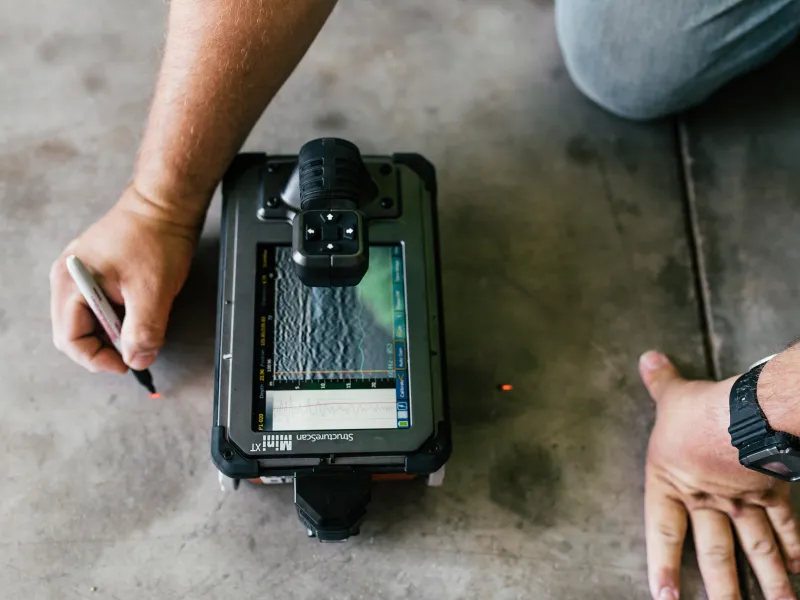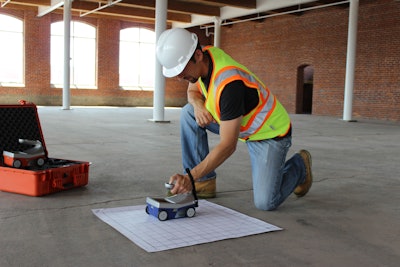Introduce the Transformative Power of Concrete Scanning in Taking Full Advantage Of Effectiveness and Security
Concrete scanning has actually arised as a crucial device in the building and construction sector, providing unequaled benefits in boosting task efficiency and ensuring security standards. By utilizing advanced modern technology, concrete scanning allows experts to see past the surface, revealing covert complexities that might affect the structural honesty of a building. The transformative power of concrete scanning hinges on its capability to give real-time data and thorough understandings, revolutionizing just how tasks are prepared and executed. As we explore the ins and outs of this ingenious strategy, a world of possibilities opens, showcasing a new era of building and construction techniques that prioritize precision and security.
Importance of Concrete Scanning
Ensuring the architectural stability and safety of construction jobs starts with the vital step of carrying out detailed concrete scanning. Concrete scanning is a non-destructive technique made use of to spot and map subsurface components within concrete structures. This procedure is crucial in recognizing possible risks, such as rebar, post-tension wires, and channels, that may be hidden within the concrete. By making use of advanced technologies like ground-penetrating radar (GPR) and electromagnetic induction, building and construction teams can properly locate these components without causing any damages to the structure.
The importance of concrete scanning can not be overstated, as it plays a vital duty in preventing crashes, lessening project hold-ups, and guaranteeing the long-lasting resilience of the building and construction. By determining potential risks before the building and construction phase starts, home builders can apply proper safety and security steps and make educated decisions regarding the layout and implementation of the task. Additionally, concrete scanning helps in enhancing project timelines and spending plan by avoiding unforeseen expenses and hold-ups that may arise because of unforeseen blockages within the concrete. Ultimately, purchasing complete concrete scanning is a proactive strategy that enhances both efficiency and security in construction tasks.
How Concrete Scanning Functions
Concrete scanning runs as an important device in building and construction jobs by using advanced technologies to spot and map subsurface components without causing architectural damage. Ground Permeating Radar (GPR) and Electromagnetic Induction (EMI) are 2 main approaches made use of in concrete scanning. GPR jobs by releasing high-frequency radar pulses right into the surface area, which recover when they encounter subsurface things or voids. The moment taken for the signal to return indicates the deepness and place of the things. EMI, on the various other hand, uses magnetic fields to recognize differences in material compositions, such as identifying rebar or avenues within concrete frameworks.
During the scanning procedure, the information collected is examined in real-time, allowing instant identification of prospective dangers or barriers below the surface area. This information aids in decision-making, guaranteeing that building tasks proceed securely and efficiently. Additionally, 3D imaging software program can be used to develop topographic maps of the subsurface components, further enhancing project planning and execution. By using these sophisticated innovations, concrete scanning dramatically decreases the danger of pricey damages and injuries on construction websites.
Benefits of Concrete Scanning
Making use of advanced scanning modern technologies in building projects offers a multitude of benefits, boosting both effectiveness and safety on-site. Among the primary advantages of concrete scanning is the capability to spot and situate embedded things such as rebar, post-tension cables, and avenues accurately. By recognizing these components prior to drilling or reducing into concrete structures, the threat of unintended strikes is substantially reduced, protecting against possible injuries to workers pop over to this site and damage to the framework itself. Furthermore, concrete scanning aids in planning and creating more successfully, as it provides exact information regarding the area and depth of architectural components.

Study: Concrete Scanning Success

In another situation, a building firm made use of 3D concrete scanning to examine the problem of aging concrete structures in a historical building. The detailed scans offered valuable insights into the extent of damage and aided prioritize maintenance efforts properly. By proactively resolving areas of issue determined with scanning, the firm was able to prolong the lifespan of the structure and make sure occupant safety and security.
These study underscore the transformative power of concrete scanning in boosting efficiency, accuracy, and safety and security in building tasks.
Executing Concrete Scanning in Projects
Applying innovative scanning innovations during building projects has actually become increasingly crucial for boosting accuracy and safety. By integrating concrete scanning right into job preparation and execution, building and construction groups can determine potential threats, such as rebar or post-tension cable televisions, concealed within concrete frameworks. This aggressive method reduces the threat of mishaps, hold-ups, and costly rework, inevitably causing more reliable job timelines and budget plans.
To apply concrete scanning effectively, task managers ought to team up closely with experienced scanning professionals to figure out the most suitable scanning strategies for the particular job needs. Involving scanning experts from the very early stages of a job enables the team to produce extensive scanning plans that address key locations of worry and click resources make sure detailed data collection.
In addition, incorporating concrete scanning into normal job operations can enhance decision-making processes, as real-time check data offers immediate insights right into the condition of concrete frameworks - Concrete Scanning. This data-driven technique assists in informed analytic and allows groups to make adjustments without delay, fostering a society of efficiency and safety and security throughout the job lifecycle

Final Thought
To conclude, concrete scanning plays a vital duty in enhancing performance and safety and security in building and construction projects. By using advanced modern technology to spot and map out underlying structures within concrete, this process helps to protect against expensive blunders, make sure architectural integrity, and minimize risks on site. With the capacity to uncover concealed elements and provide precise information, concrete scanning proves to be a valuable these details device for enhancing job end results and making the most of general success.
Concrete scanning is a non-destructive method utilized to discover and map subsurface aspects within concrete structures. In addition, concrete scanning assists in maximizing job timelines and budget by avoiding unanticipated expenses and hold-ups that may occur due to unanticipated blockages within the concrete. One notable case research entails a massive renovation job where concrete scanning played an essential duty in ensuring task success.In an additional case, a building firm made use of 3D concrete scanning to assess the problem of aging concrete structures in a historical structure. By integrating concrete scanning right into task preparation and execution, building teams can recognize possible dangers, such as rebar or post-tension cords, hidden within concrete structures.